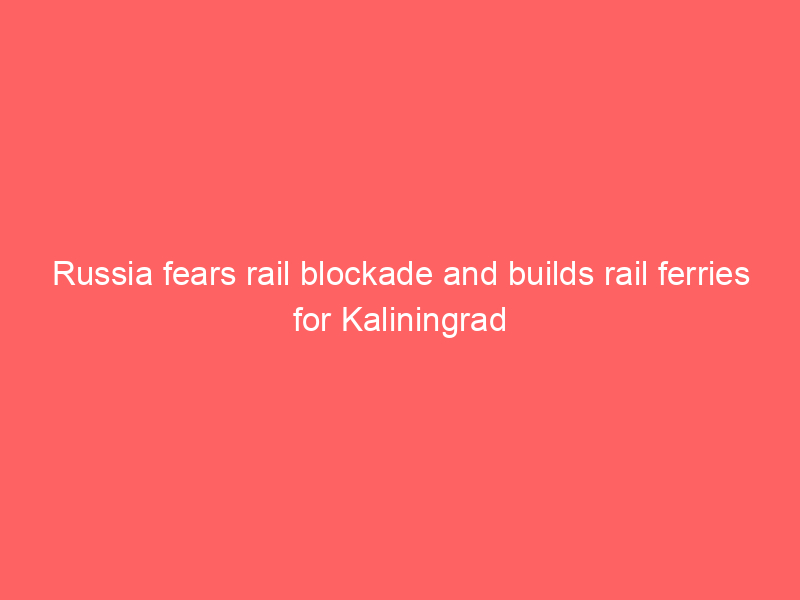Fear of a rail blockade is leading Russia to build three additional rail ferries for its Kaliningrad exclave. The country’s westernmost region is surrounded by EU and NATO member states which control all railways into and out of the region. Russia is now looking to move its rail freight by sea in order to guarantee unimpeded access to the region.
The vulnerability of Kaliningrad came to the forefront as Lithuania blocked the rail transportation of all EU-sanctioned goods into the region in June 2022. Whereas the blockade was lifted a month later, it showed that Kaliningrad’s logistics are at the mercy of its Western neighbours.
In a meeting with President Vladimir Putin on 25 January, the Russian minister of economic development subsequently stressed that Kaliningrad’s key priority is supply independence. To that end, three new rail ferries will be built to help circumvent the exclave’s dependence on railways through Lithuania. In early 2022, weeks before its invasion of Ukraine, Russia also put two new ferries into use that allowed for the transportation of rail freight.
‘Total independence’
According to Russian Railways, rail import volumes into Kaliningrad not only recovered entirely after the brief sanctions but also exceeded pre-sanction levels by 40 per cent. Goods transportation out of the region was reportedly compensated by maritime transport. With the help of subsidies, freight volumes between Kaliningrad and mainland Russian ports grew by 50 per cent last year.
Currently, approximately 40 to 45 per cent of all freight from and to Kaliningrad is being transported by sea, according to the region’s governor Anton Alikhanov. He is not satisfied with these numbers, however, as the governor stresses the need for ‘total independence’. Accordingly, the new rail ferries will be constructed at a Russian shipyard with exclusively Russian materials and parts.
Also read:
